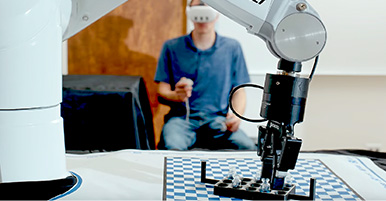Citation
Radiation induced defects in poly(3-alkylthiophene). Materials Research Society Spring 2014 Meeting.
Abstract
Defect formation arising from radiation induced hydrogen rearrangement in polythiophenes has been investigated experimentally and theoretically.[1] Defect formation by irradiation of BHJ solar cells has been proposed to be a source of recombination centers in organic solar cells.[1] Formation of the defects is reversible by annealing. Calculations show that hydrogen related defects indeed give rise to electronic states in the gap, and that such defects can migrate with an activation energy that is in agreement with annealing studies. To fully understand the process of radiation induced hydrogen rearrangement we must determine the minimum energy required to form such defects. We therefore will discuss density functional calculations of the energy barriers that must be surmounted to form hydrogen related defects in polymers such as poly(3-alkylthiophene).[2] Pathways for defect production corresponding to interpolymer and intrapolymer H rearrangement were identified. The calculations indicate that radiation induced gap state production in poly(3-alkylthiophene), via removal of H from the alkyl chain, becomes possible when the energy of the radiation exceeds a threshold value in the range from 2.7 to 3.2 eV. [2] This energy is less than the nominal value for C-H bond breaking (~4.4eV), because bond breaking and bond forming occur concurrently. This work was supported in part by the AFOSR under Grant No. FA9550-13-1-0106. [1]R. A. Street, J. E. Northrup, and B. S. Krusor, Phys. Rev. B 85 (2012) 205211. [2]J. E. Northrup, Radiation induced hydrogen rearrangement in poly(3-alkylthiophene), Applied Physics Express 6, 121601 (2013)


